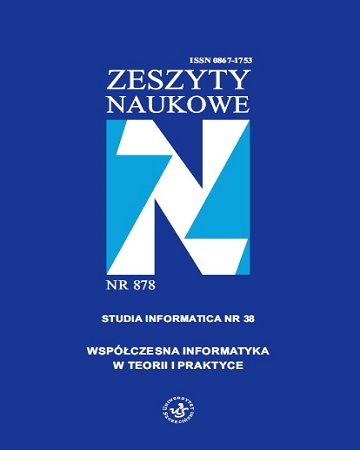
ISSN: 0867-1753
eISSN: 2300-410X
OAI
DOI: 10.18276/si.2015.38-14


Issue archive /
ZN 878 SI nr 38
Zdalna realizacja usług w internecie z uwzględnieniem profilu użytkownika
(Internet services offered remotely, with particular focus on user profile)
| Authors: |
Grzegorz
Szyjewski
Uniwersytet Szczeciński, Wydział Nauk Ekonomicznych i Zarządzania |
| Keywords: | internet authentication internet transaction on-line services |
| Data publikacji całości: | 2015 |
| Page range: | 13 (189-201) |
Abstract
Internet is a widely accessed medium with a significant and growing number of active users each year. internet users frequently become part of the transactions performed remotely. each transaction involves an authorization process, in order to confirm user’s identity or user’s credentials. Such authorizations takes place in daily activities, i.e.: when using e-mail accounts, realizing payments or while doing on-line shopping.Internet users usually do not notice the fact that they take part in the transactions, which aim is to check their credibility. This is because it is executed automatically, as this operation becomes an integral part of using virtual resources.The fact internet is so popular, results in a great variety of people using it. Each global web user has its’ individual set of attributes, being a result of user’s age, sex or the frequency of net using. The attributes might be further generalized into more specified sets (ranges), in order to distinguish a particular group of people. The groups could be characterized by a joint range of attributes, which enable to define the user’s profile. This brings up a question, whether a dependency exists between the features of each user and the types of services such user uses. To provide the answer, internet users have been subjected to a survey. During a study two groups of data have been gained: characterizing the users’ attributes and showing users’ preferences. The comparison of both enabled to conduct the observations about the dependencies between the type of user and the type of remote authorizations methods this certain user was using. The article presents the results showing not only the popularity of different services but also the spread of different services among the internet users.
Download file
Article file
Bibliography
| 1. | Gareis K., Hüsing T., Birov S., Bludova I., Schulz C., Korte W.B. (2014), E-skills for jobs in Europe: measuring progress and moving ahead – final report, Empirica Gesellschaft für Kommunikations- und Technologieforschung, Bonn. |
| 2. | Kisielnicki J., Szyjewski Z. (2002), Nowa ekonomia a współczesna informatyka, „Ekonomika i Organizacja Przedsiębiorstwa”, nr 1, s. 15–26. |
| 3. | Łeńska-Bąk K. (2009), Wirtualne kartki na każdą okazję. Współczesne życzenia przez Internet, w: Folklor w dobie Internetu, red. G. Garczarczyk, P. Grochowski, Wydawnictwo Naukowe Uniwersytetu Mikołaja Kopernika, Toruń. |
| 4. | Polskie Badania Internetu (2013), Raport e-administracja w oczach internautów – 2013, Warszawa. |
| 5. | Szyjewski G. (2010), Remote authentication as a gateway to automate process of nonelectronic service offering, w: Information Systems in Management VII – Distant Learning and Web Solutions for Education and Business, red. P. Jałowiecki, A. Orłowski, WULS |
| 6. | Tabor M. (2012), Nie używam profilu zaufanego na ePUAP, Computerworld, http://www.computerworld.pl. |
| 7. | Thompson K.M., Jaeger P.T., Greene T.N., Subramaniam M., Bertot J.C. (2014), Digital Literacy and Digital Inclusion, Rowman & Littlefield, London. |
| 8. | Yang W.H., Shieh S.P. (1999), Password Authentication Schemes with Smard Cards, „Computers & Security”, vol. 18, no. 8, s. 727–733. |